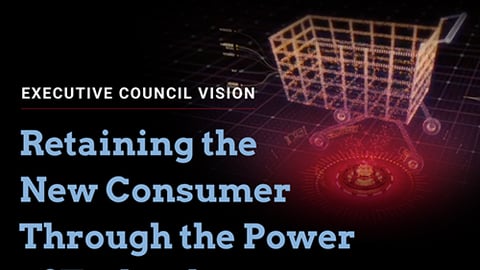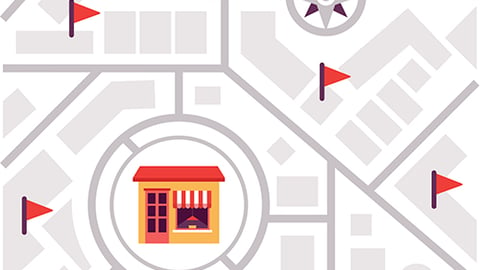Data Analytics Innovation: Up Close with Alteryx’s Gib Bassett
With more than two decades of tech industry experience under his belt in such roles as product and industry marketing, product management, business development, and consulting, Gib Bassett has had a diverse career.
Threaded throughout all of his roles has been a concentration on analytics adoption and business value challenges, and he’s been especially focused on data and analytics at such companies as Oracle, Salesforce, and Teradata. Now the solutions marketing director at Alteryx, Bassett has identified patterns among those achieving value from their analytics investments, and he enjoys telling the stories to others wanting to similarly improve.
We caught up with the CGT/RIS Executive Council member to learn more about these stories, as well as the data, analytics, and tech innovations that are on his radar.
CGT: You’ve spent years helping retailers and consumer goods companies tap into analytics to overcome their challenges, executed in a variety of settings. What’s been consistent across these experiences?
Market leaders seem to only get bigger and more capable while others continue to struggle. This has been the case for many years, and it comes down to leadership, organizational and cultural factors. Analytics success is not really a technical problem.
EC Member Shares
How long have you been with Alteryx?
Almost a year.
Which book is on your nightstand or to-do list?
I am almost done reading Fail Fast, Learn Faster by Randy Bean. It’s full of best practices and examples of organizations achieving great result with analytics. I also recommend Tom Davenport’s book, The AI Advantage, and Doug Laney’s book, Infonomics.
Favorite food?
The pandemic has broadened both me and my family’s palates due to delivery services like Doordash, GrubHub, and Uber Eats. I wanted to examine my order history by restaurant or category for trending to answer this question based on data, but the apps don’t offer this — that would be a great use case. If I worked for a food company, I’d like some of that insight too. That could be a data monetization use case for the delivery services.
Fill in the blank: "In 2022, I can't wait to …”
Engage more with the League of Leaders community, especially around subjects that beg for a discussion of improvement through better data and analytics practices. There is a lot of great work being done that everyone can learn from and consider applying to their own circumstances. I’m a big believer in all ships rising and I advocate for sharing and collaborating whenever possible.
Risk-averse and stressed leadership teams face Wall Street pressures, small margins, slow growth, and scarce expertise. There is almost no time to step back, even with digital transformation a high priority.
This leads to many suffering from corporate inertia where poor choices pile on top of one another and little to no progress happens. Meanwhile, leaders continue to outpace laggards.
To resolve this requires a combination of top-down and bottom-up activities by people who recognize the opportunity and have the authority to act.
CGT: What’s holding back the widescale adoption of advanced analytics? Is it still an education problem?
In consumer industries like retail and CPG, I think it’s partly education by leadership to understand the current state and what’s possible within the business to have confidence to act. It is also due to a scarcity of skilled and experienced people.
For those who study and practice data science, other industries like financial services or big cloud companies are often more attractive places to build careers. It’s therefore important to figure out how to make incremental but meaningful progress despite resource constraints.
CGT: What are some of the most innovative uses of advanced analytics that you’re seeing right now?
Two that come to mind are cashierless checkout and audience monetization. Given labor trends in many retail sectors (meaning scarcity), a use case like Amazon Go should see a lot of interest.
Success, however, depends on a retailer’s capacity to absorb new technology into their business processes. Sensor and visual data require devices in each store plus the network capacity to transfer data and analytics quickly. Could the same investment support loss prevention or optimize store layout? I think so but these are different processes.
Audience monetization is a media use case for retailers to extend supplier trade promotion into mobile and web advertising to take advantage of investments in e-commerce. It represents a logical extension to existing collaborative efforts more focused on the commercial elements of the relationship.
I also expect opportunities for CPG brands to optimize their direct-to-consumer channels. The pandemic has shown the value of direct-consumer relationships. While some brands have already established productive D2C businesses, many struggle with a variety of issues, from how to manage orders and shipping efficiently, to reconciling the effort with selling through other online marketplaces and existing retail partners.
CGT: What do you see as the future of advanced analytics, and what will it take for the industry to achieve this?
Across both retail and CPG, the concept of a “digital twin” for almost anything is going to play a huge role – be it complete stores, facilities, factories, supply chain processes, products, product launches and promotion, or transportation. The “internet of things” isn’t a new idea, but innovative applications for data stemming from sensors, cameras, devices, and products shows a lot of potential. Monitoring, simulation, prediction, and prescription are all applications to watch out for.
Expect a world soon where these “twins” will further collaboration among retail and CPG brands plus others in their ecosystem like logistics providers, material, and component suppliers, and even consumers. There is a well-known cracker company connecting the dots between farm and consumer in the name of transparency, for example.
More and a greater variety of simplified software tools — called low or no code — will be key to these ends to involve more workers in the process.
CGT: How can consumer goods companies and retailers become better trading partners in 2022?
Focusing on customer experience is a good place to start. Supply chains that did well during the height of the pandemic were based on close collaboration informed by what I call “customer centric” analytics. This means looking at your customer, their needs, wants and preferences across the purchase journey, no matter if you are the seller, the maker, materials supplier, or shipper. It’s an “outside-in” point of view that looks past order and shipment data.
Meeting demand profitably is becoming harder, not easier. Collaboration based on a common understanding of the customer, but that looks to outside signals to inform decisions like the demand forecast, materials availability, inventory levels, discounts, and SKU rationalization, are all areas that stand to improve in 2022.
CGT: What are some of the emerging technologies that you think will bring about the most change in the next 5-10 years?
I think transparency and simplicity are going to accelerate a lot over the next 10 years. For AI to become as pervasive and differentiating as we all imagine it can, there needs to be much better understanding of the inner workings, assumptions, biases, and potential consequences by everyday workers lacking a PhD in statistics or data science.
Otherwise, AI will only find widespread applications much like it does today with more simple use cases like personalizing an email, directing a chatbot conversation, or offering a product recommendation shopping online. Supervisory controls, testing tools, simulation and auditability are probably technologies we will see a lot more of in the AI space.
Simplicity via the application of AI to the software development process itself might free resource-constrained organizations and industries to accelerate the use of analytics more strategically. In this world, orchestrating customer experiences across a network of companies that collaborate and interoperate based on specialization becomes the norm. Knowing a customer segment and its individual members better than anyone else will be the competitive difference maker. Which of course requires outstanding data and analytics expertise.
I suspect this will help many retailers better manage the often-competing operating elements of physical and digital retail, including pressure from outside to separate brick-and-mortar banners from e-commerce.
This is also published on RIS News, a CGT sister publication.







